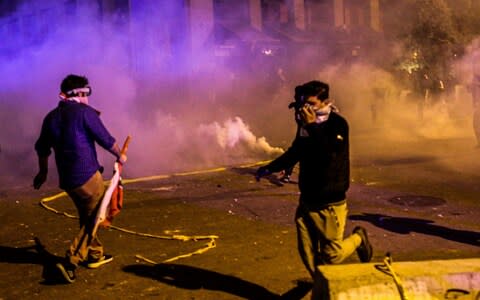More than 40 injured during anti-government protests in Beirut

More than 40 people were injured in Beirut over the weekend as security forces cracked down on protesters with rubber bullets, tear gas and water cannons.
Protesters demanding an end to corruption and government mismanagement were driven from a square in the centre of the city that hosts Lebanon’s parliament building.
The square, one of the most heavily securitised in Beirut, has been closed since protests began. After the protesters were removed, a tense standoff between security forces and protestors ensued, which saw some of the worst violence since the protests began.
“When we got attacked it was very much out of the blue, it was so sudden,” said Racha, a 24-year-old protester who was hospitalised after being hit several times by an Internal Security Forces (ISF) officer wielding a baton.
“Everyone there must have been as confused as I was.” Interior Minister Raya El Hassan released a statement Sunday expressing “sadness” at the violence and ordered the ISF to conduct an internal investigation.
Lebanon is in the midst of an acute economic crisis, with the cost of living rising rapidly and with importers struggling to acquire goods such as fuel and wheat due to a dollar shortage.

Sustained protests against the ailing economy, corruption and government mismanagement forced the resignation of Prime Minister Saad Hariri on 29 October. Since then, however, political elites have tried to maintain their grip on power.
There has so far been little consensus on a new cabinet that satisfies protestors’ demands for a new political system. One key demand has been for a restructure of the tiny Mediterranean country’s bloated cabinet, made up at least partly of technocrats.
In its last iteration Lebanon’s cabinet was composed of 30 ministers agreed upon by its sectarian political elites. Hezbollah leader Hasan Nasrallah, whose group has a significant role in Lebanon’s political system, reaffirmed his support for the system in a speech on Friday, calling for a “partnership government with the widest possible representation.”
Local media reported on Saturday night that President Michel Aoun was likely to once again designate Hariri as prime minister some time next week, which could provoke further protests.

 Yahoo News
Yahoo News 